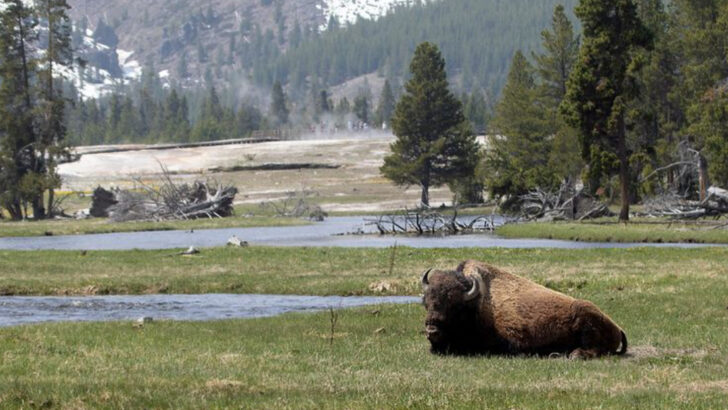Yellowstone isn’t just a park—it’s a wild kingdom. From towering bison to elusive wolves, the animals here don’t just exist; they own the landscape. Every rustle in the grass, every ripple in the water, every distant howl is a reminder that nature still reigns supreme.
Some creatures are easy to spot, like the massive elk that casually stroll through valleys. Others demand patience—a fleeting glimpse of a grizzly, the silent shadow of a cougar slipping through the trees. And then there are the unexpected ones, the creatures you’d never think to find but leave you speechless when you do.
Every visit is different, every encounter unforgettable. Whether you’re drawn to the giants of the land or the smaller, secretive wonders, Yellowstone is home to some of the most breathtaking wildlife on Earth.
Let’s meet the 29 animals that make this park legendary.
American Bison
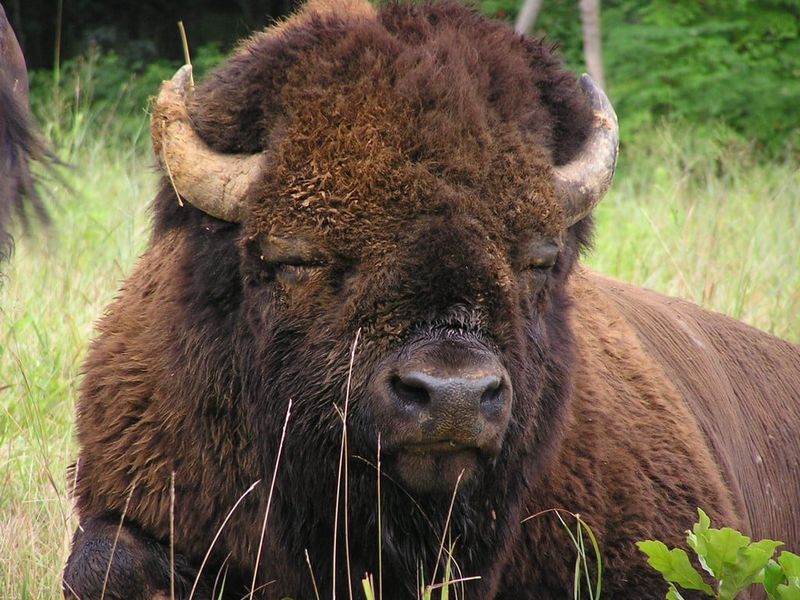
The American Bison is an iconic symbol of the Great Plains and a must-see in Yellowstone. These massive creatures, often seen in herds, graze peacefully across the park’s expansive meadows.
Watching a bison move through the misty morning fields is an unforgettable experience. Though they appear docile, it’s crucial to maintain a safe distance as they can be unpredictable when threatened.
Bison also play a vital role in the ecosystem by grazing and creating habitats for other species. Their presence is a testament to the park’s dedication to wildlife conservation efforts.
Gray Wolf
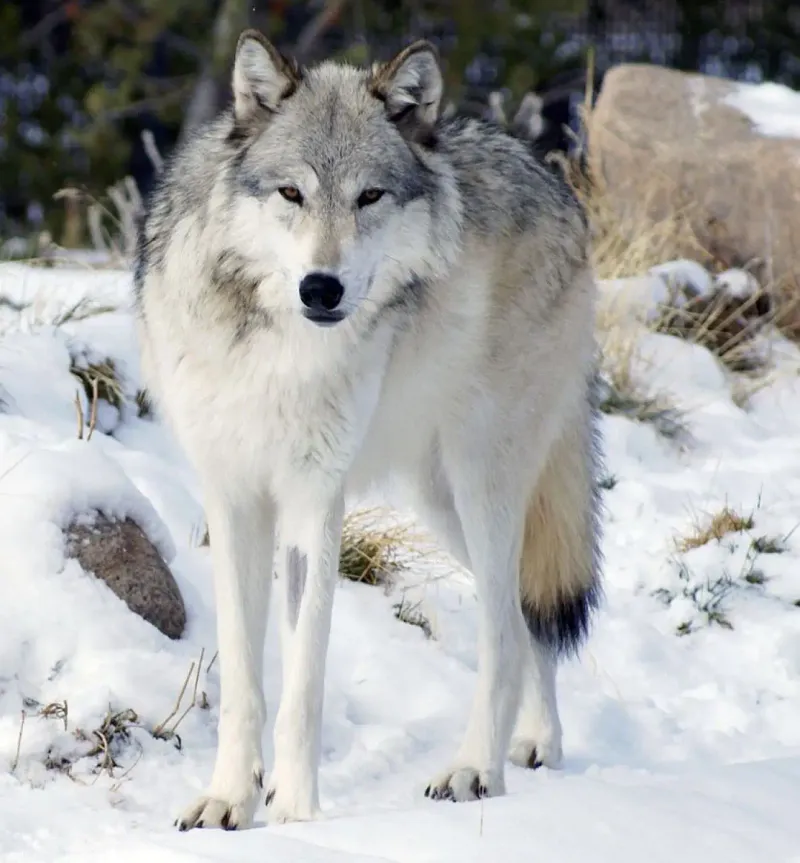
The reintroduction of the gray wolf to Yellowstone has been a conservation success story. These intelligent predators roam the park’s forests and open spaces, hunting in packs and maintaining the balance of the ecosystem.
Hearing their haunting howls echoing through the valleys is a magical experience. Wolves are elusive, often blending into the snowy terrain, so spotting one requires patience and luck.
They have a complex social structure, with each pack member playing a specific role. Observing wolves in their natural habitat offers insight into their intriguing behavior and dynamics.
Grizzly Bear
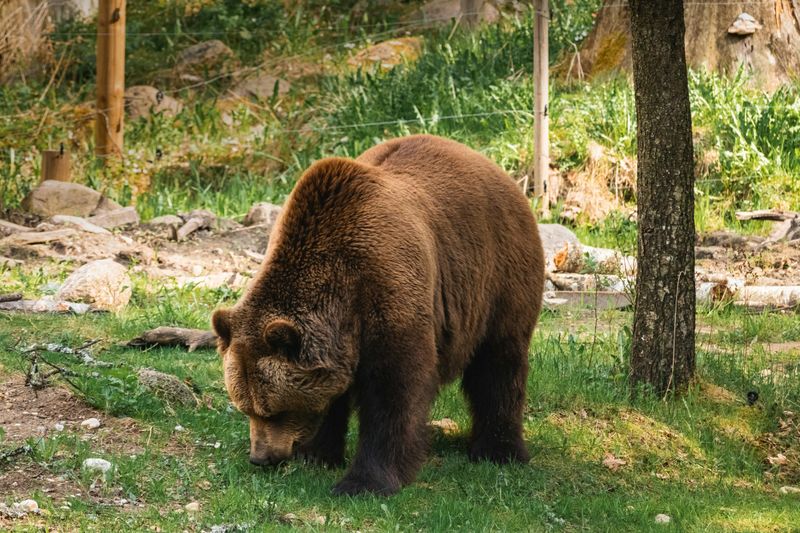
Grizzly bears are one of Yellowstone’s most awe-inspiring residents. Known for their strength and agility, these bears are often seen foraging for food or fishing along rivers.
Spotting a grizzly in the wild is a thrilling experience, but it’s essential to respect their space and follow park guidelines for bear encounters. Grizzlies play a crucial role in the ecosystem by dispersing seeds and nutrients.
Observing these majestic animals offers a glimpse into the park’s wild and untamed beauty. Always carry bear spray and stay informed about recent bear activity during your visit.
Elk
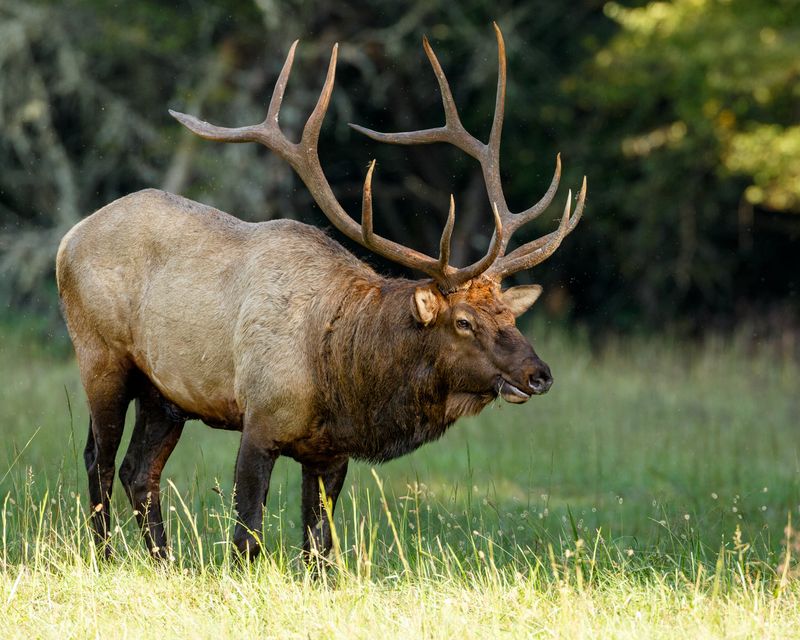
Elk are among the most commonly seen large mammals in Yellowstone. During the autumn rut, males bugle to attract females, creating a captivating symphony across the valleys.
Watching a herd of elk move gracefully through the meadows is a serene sight. These herbivores play a significant role in the park’s ecology by influencing plant communities and serving as prey for predators.
The best times to view elk are during dawn and dusk when they are most active. Their presence enriches the park’s landscape, offering visitors a taste of untamed wilderness.
Bald Eagle
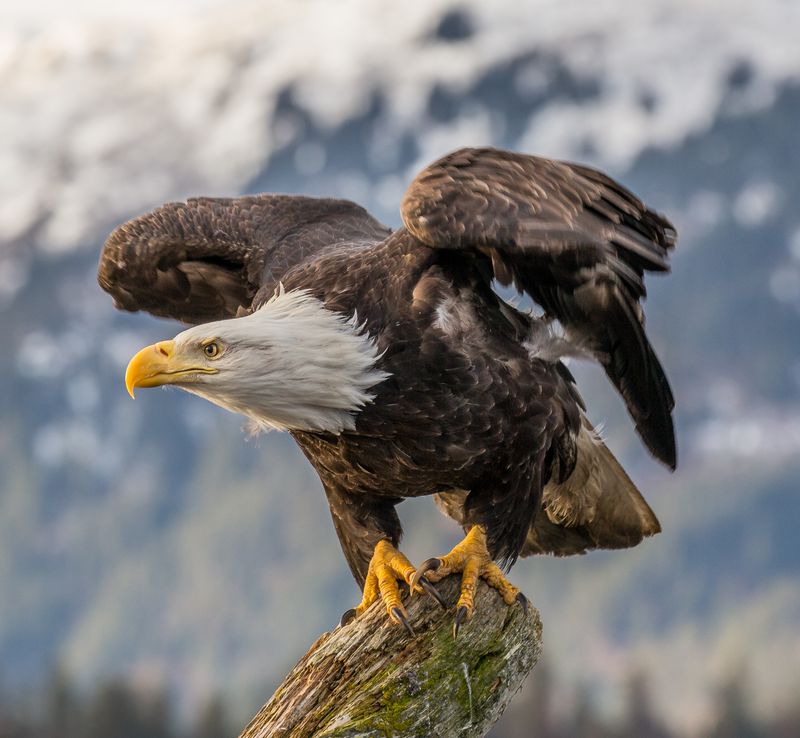
The bald eagle, a symbol of American freedom, is a breathtaking sight in Yellowstone. These powerful birds of prey are often seen soaring high above the park’s lakes and rivers.
With their keen eyesight, they spot fish from great heights, diving swiftly to capture their meal. Observing a bald eagle in flight is a humbling experience, showcasing the beauty of nature’s design.
Eagles contribute to the ecosystem by controlling fish populations and serving as indicators of environmental health. Their majestic presence is a reminder of the park’s rich biodiversity and conservation success.
Moose
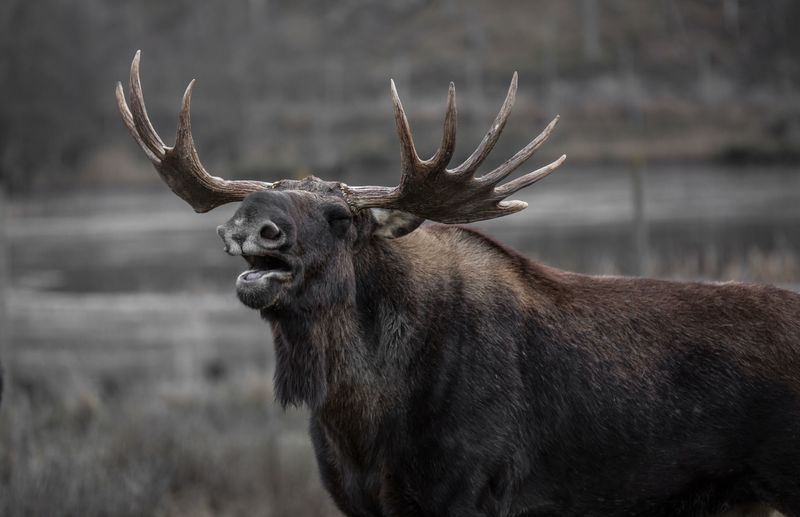
Moose are among the largest mammals in Yellowstone, known for their long legs and distinctive dewlap. These solitary creatures are often found near water sources, feeding on aquatic plants.
Watching a moose move gracefully through the water is a mesmerizing sight. Despite their size, moose are surprisingly elusive, often blending into the park’s dense forests.
They play a role in shaping aquatic plant communities and serve as prey for large predators. Observing a moose in its natural habitat offers a peaceful connection to the wild and highlights the park’s ecological diversity.
Pronghorn
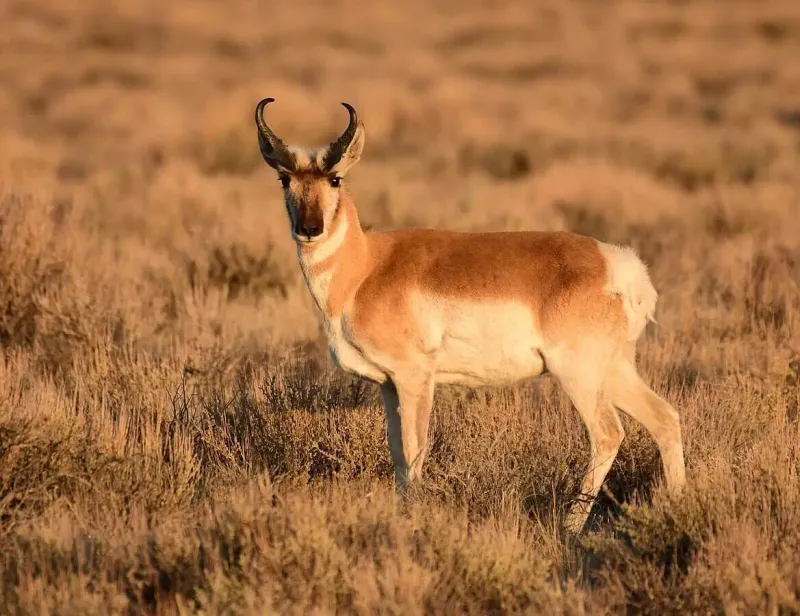
Pronghorns are North America’s fastest land animals, capable of reaching speeds up to 60 miles per hour. These graceful creatures roam the open plains of Yellowstone, often seen grazing in groups.
Their speed and agility are essential for evading predators. Watching a pronghorn sprint across the landscape is a display of pure athleticism.
Despite their antelope-like appearance, pronghorns are unique to North America. Their presence in Yellowstone highlights the park’s role in preserving native species.
Pronghorns contribute to the ecosystem by grazing on vegetation and serving as prey for large carnivores.
Yellowstone Cutthroat Trout
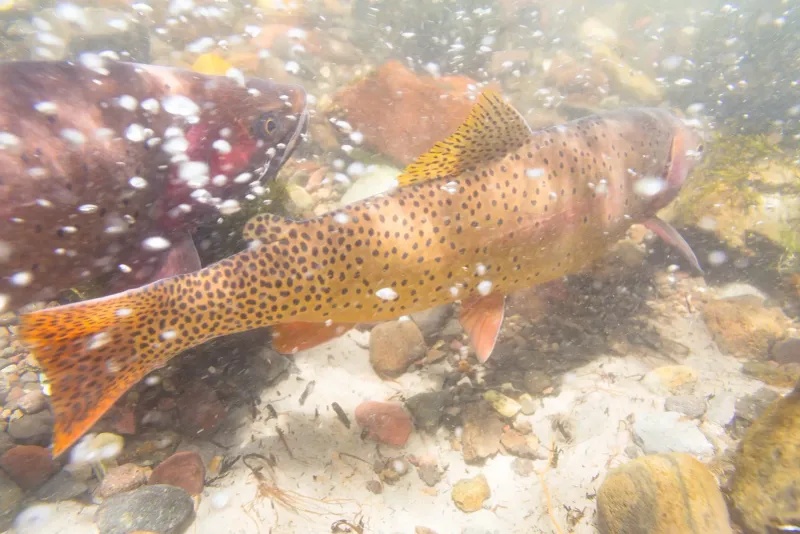
The Yellowstone cutthroat trout is a native fish species crucial to the park’s aquatic ecosystems. These colorful trout can be found in the park’s rivers and lakes, where they contribute to the food chain as both predator and prey.
Fishing for cutthroat trout is a popular activity, but conservation efforts ensure their populations remain sustainable. Observing these fish in their natural habitat offers insight into the park’s complex aquatic ecosystems.
Their presence is vital for maintaining the balance of life in Yellowstone’s waters, supporting birds, mammals, and other fish species.
Red Fox
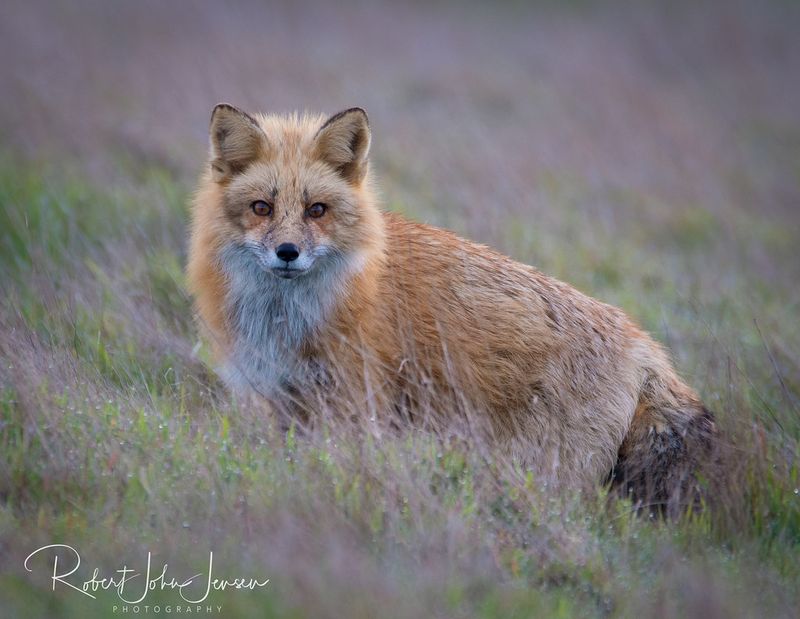
Red foxes are adaptable predators found throughout Yellowstone. These cunning creatures thrive in various habitats, from open fields to dense forests.
Their striking red coats and bushy tails make them easily recognizable. Foxes play a vital role in controlling rodent populations, contributing to the park’s ecological balance.
Watching a fox hunt or play offers a glimpse into their intelligent and playful nature. These solitary animals are often spotted during dawn or dusk, when they are most active.
Their presence adds charm to the park’s diverse wildlife, captivating visitors with their agility.
American White Pelican
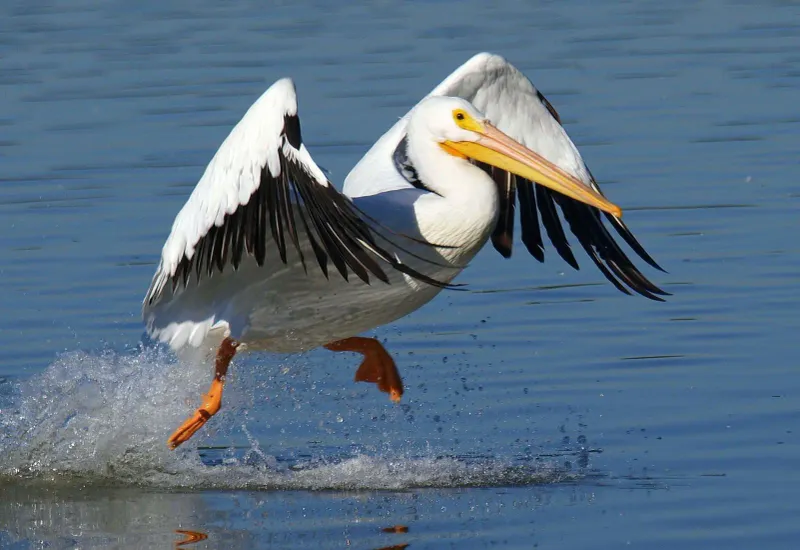
American white pelicans are a spectacular sight in Yellowstone, often seen gliding gracefully over lakes and rivers. These large birds are easily identified by their white plumage and long orange bills.
Pelicans work cooperatively to herd fish into shallow waters, showcasing their unique hunting strategy. Watching them take flight is a breathtaking experience, highlighting the beauty of the park’s avian diversity.
Pelicans contribute to the ecosystem by controlling fish populations and enriching the nutrient cycle. Their presence is a testament to Yellowstone’s thriving aquatic habitats, offering a serene connection to nature.
Mountain Goat
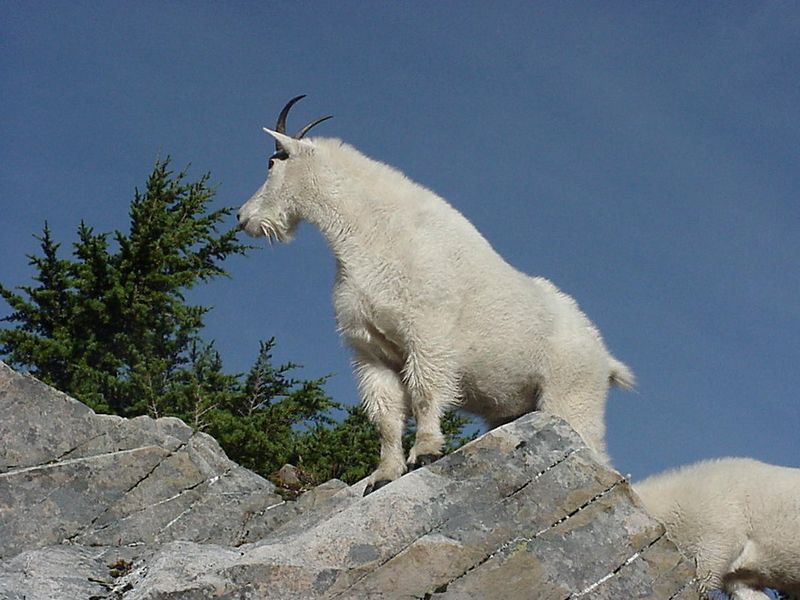
Mountain goats are remarkable climbers, often seen navigating Yellowstone’s steep cliffs and rugged terrain. Their thick woolly coats and impressive horns make them well-adapted to the alpine environment.
Watching a mountain goat leap effortlessly across rocky ledges is a testament to their agility. These herbivores graze on grasses and shrubs, contributing to the park’s plant diversity.
Despite their seemingly inaccessible habitats, mountain goats can occasionally be spotted by observant visitors. Their presence enriches the park’s mountainous regions, offering a glimpse into the resilience and adaptability of wildlife in harsh environments.
Coyote
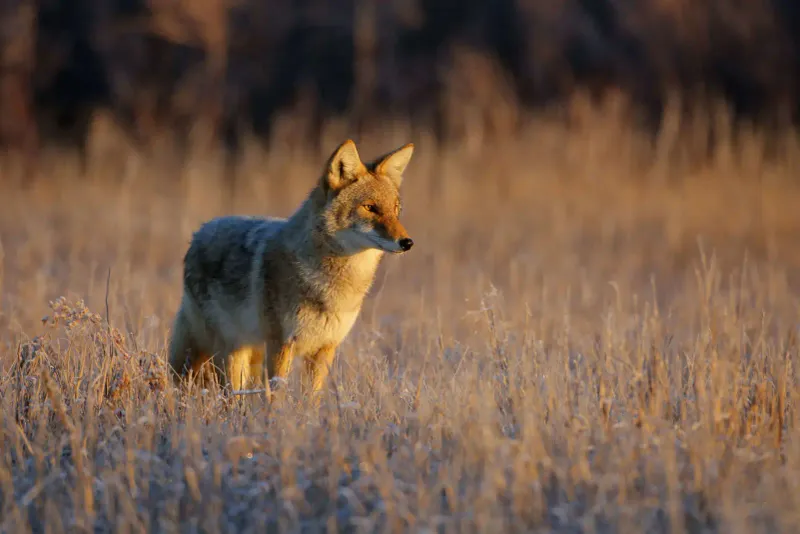
Coyotes are highly adaptable predators found throughout Yellowstone, thriving in diverse environments from forests to grasslands. Their distinctive howls create an eerie ambiance, resonating across the park’s landscapes.
Coyotes play a crucial role in controlling small mammal populations, maintaining ecological balance. Observing a coyote in its natural habitat offers a glimpse into its resourceful and intelligent nature.
These opportunistic hunters often travel alone or in small family groups. Their presence highlights Yellowstone’s rich biodiversity, reminding visitors of the park’s intricate web of life.
Always keep a respectful distance from wildlife.
Trumpeter Swan
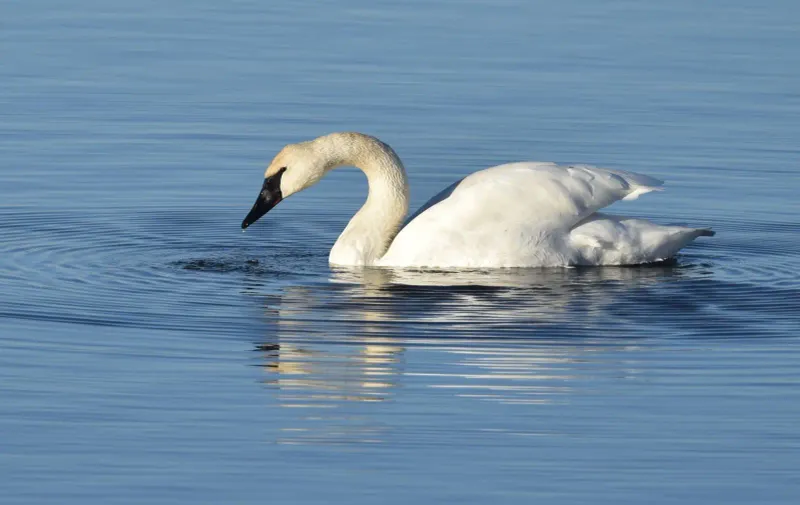
Trumpeter swans are elegant birds, often seen gliding gracefully across Yellowstone’s lakes. These large swans, with their distinct all-white plumage and long necks, are a symbol of beauty and grace.
Their gentle calls echo across the water, creating a serene atmosphere. Swans contribute to the park’s ecosystem by grazing on aquatic plants and enriching the nutrient cycle.
Observing them in their natural habitat offers a peaceful connection to nature, showcasing the park’s commitment to avian conservation. Their presence is a reminder of the delicate balance that sustains Yellowstone’s diverse wildlife.
River Otter
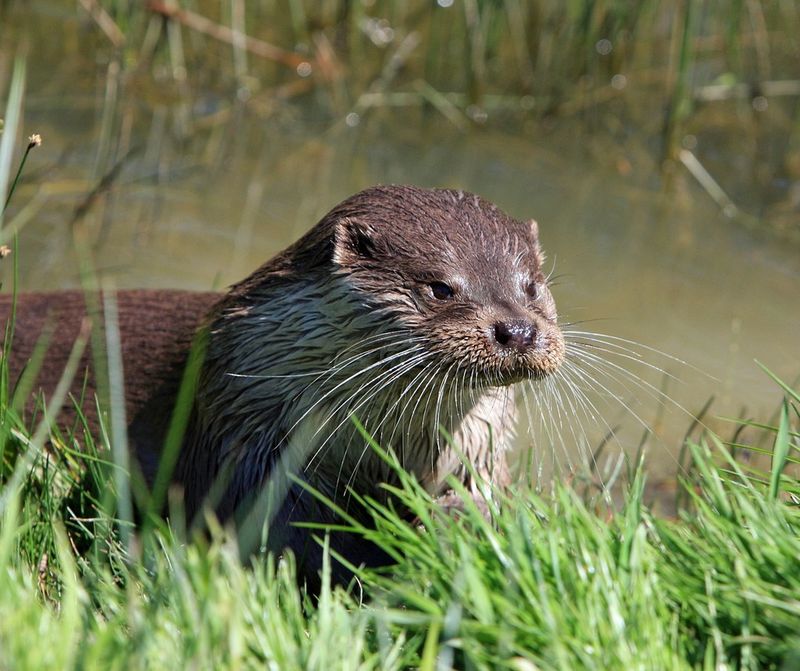
River otters are playful and social creatures found in Yellowstone’s waterways. These agile swimmers are often seen frolicking in rivers and lakes, delighting visitors with their acrobatic antics.
Otters play a vital role in maintaining healthy fish populations, showcasing their importance in the aquatic food web. Watching a group of otters interact offers a glimpse into their complex social behavior.
Their presence adds charm to the park’s diverse wildlife, highlighting the interconnectedness of aquatic ecosystems. Observing otters in their natural habitat provides an entertaining and educational experience for nature enthusiasts.
Yellow-bellied Marmot
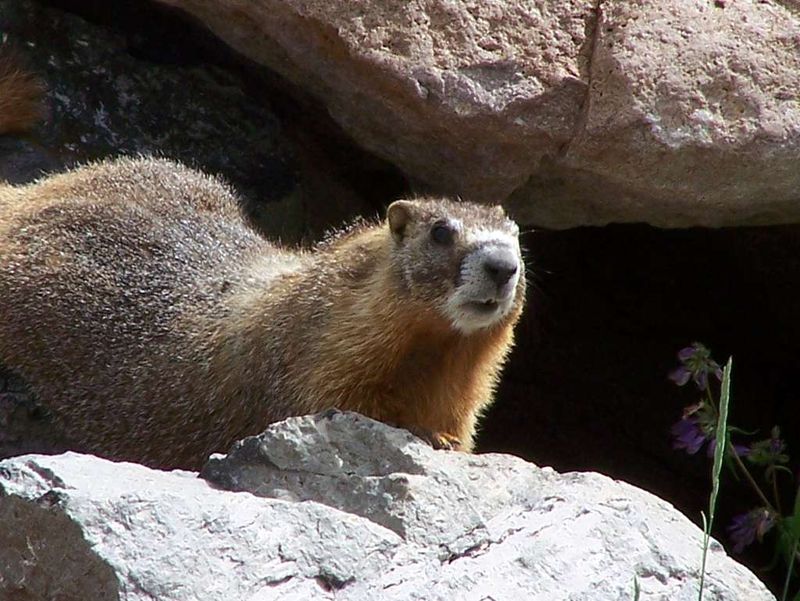
Yellow-bellied marmots are often seen basking in the sun on rocky slopes throughout Yellowstone. These social rodents live in colonies, communicating with a series of whistles and chirps.
Marmots play a role in aerating the soil through their burrowing activities, contributing to the park’s ecological health. Watching a marmot interact with its colony offers a glimpse into their cooperative behavior.
These herbivores graze on grasses and wildflowers, helping to shape plant communities. Their presence enriches the park’s alpine regions, offering visitors an opportunity to observe wildlife in a picturesque setting.
Black Bear
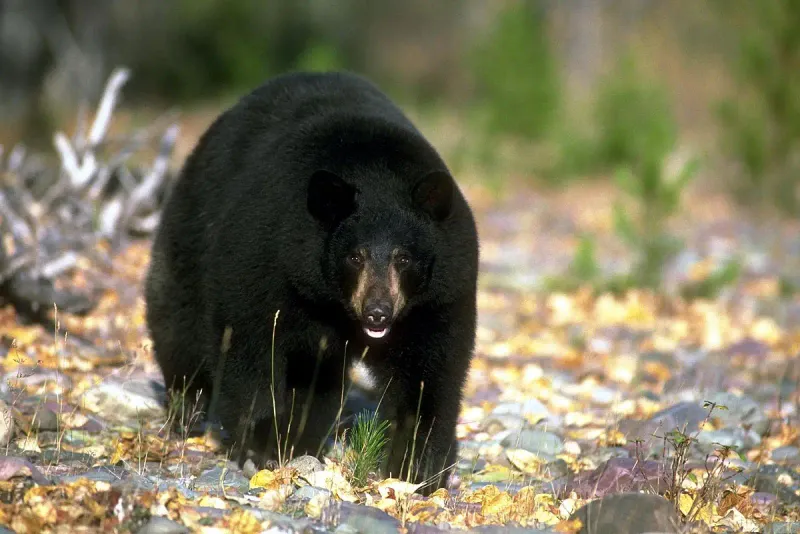
Black bears are versatile omnivores, often seen foraging in Yellowstone’s forests and meadows. These bears, varying in color from black to cinnamon, are adept at finding food throughout the park.
Observing a black bear in the wild is an exciting experience, but it’s essential to adhere to safety guidelines and keep a safe distance. Bears play a critical role in seed dispersal and nutrient cycling, shaping the park’s ecosystems.
Their presence highlights Yellowstone’s commitment to preserving its diverse wildlife. Always carry bear spray and stay informed about bear activity while exploring the park.
Big Horn Sheep
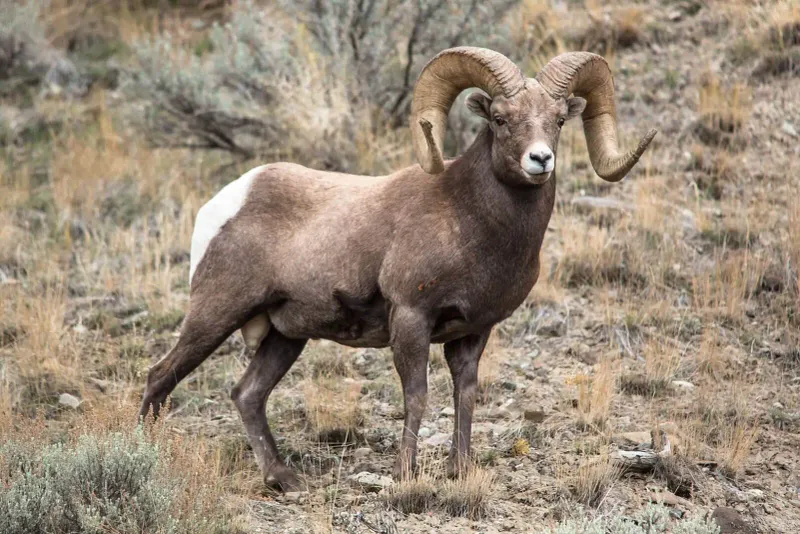
Bighorn sheep are impressive climbers, often seen on Yellowstone’s rugged cliffs and rocky slopes. These animals are known for their large, curved horns and sure-footedness.
Watching a group of bighorn sheep navigate steep terrain is a testament to their agility and strength. These herbivores graze on grasses and shrubs, contributing to the park’s plant diversity.
Bighorn sheep play a role in maintaining ecological balance by influencing vegetation patterns. Their presence offers visitors an opportunity to witness the resilience and adaptability of wildlife in challenging environments.
Always observe wildlife from a distance.
Osprey
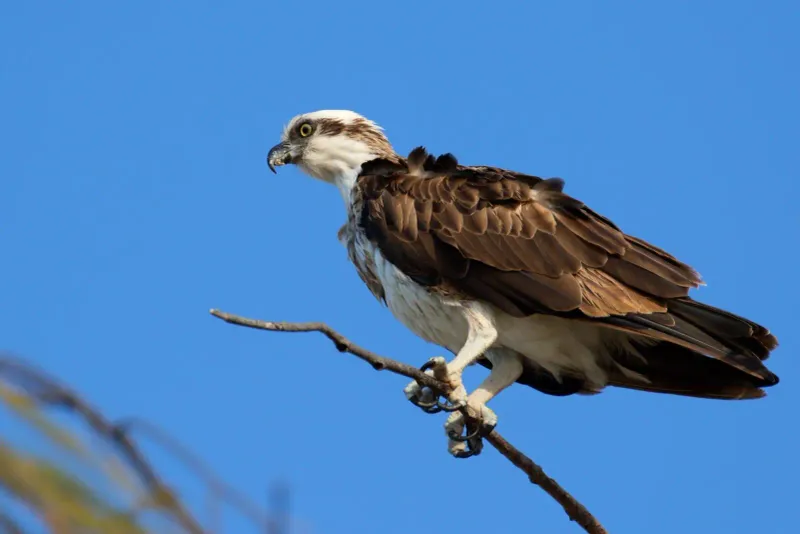
Ospreys are skilled hunters, often seen fishing in Yellowstone’s lakes and rivers. These birds of prey are easily recognized by their distinctive black and white plumage and sharp, hooked beaks.
Watching an osprey dive into the water to catch a fish is a thrilling spectacle. Ospreys contribute to the ecosystem by controlling fish populations and serving as indicators of environmental health.
Their presence highlights Yellowstone’s rich avian diversity and the park’s commitment to protecting its feathered inhabitants. Observing ospreys in action offers an exciting glimpse into the intricacies of the natural world.
North American River Otter
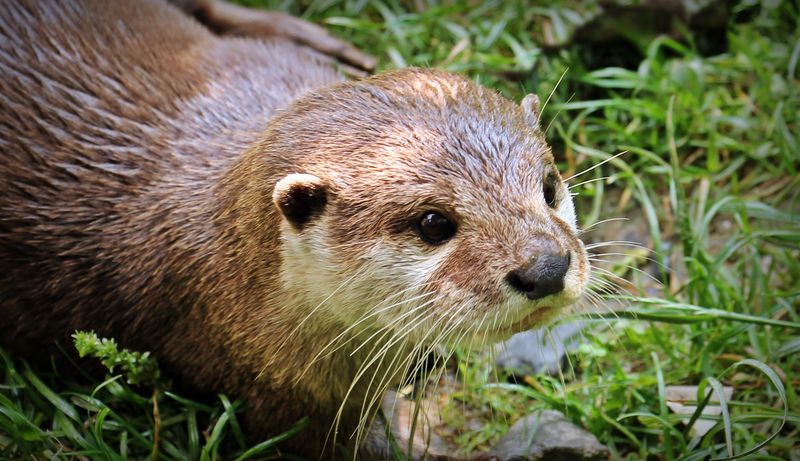
The North American river otter is a playful and active resident of Yellowstone’s rivers and streams. These sociable mammals are known for their acrobatic swimming and playful antics.
Watching otters slide down riverbanks and chase each other in the water is a delight for visitors. Otters play a crucial role in maintaining fish populations, contributing to the ecological balance of aquatic systems.
Observing them in their natural habitat offers insights into their social structures and behaviors. Their presence adds vibrancy to Yellowstone’s waterways, showcasing the park’s dedication to preserving diverse wildlife.
Mule Deer
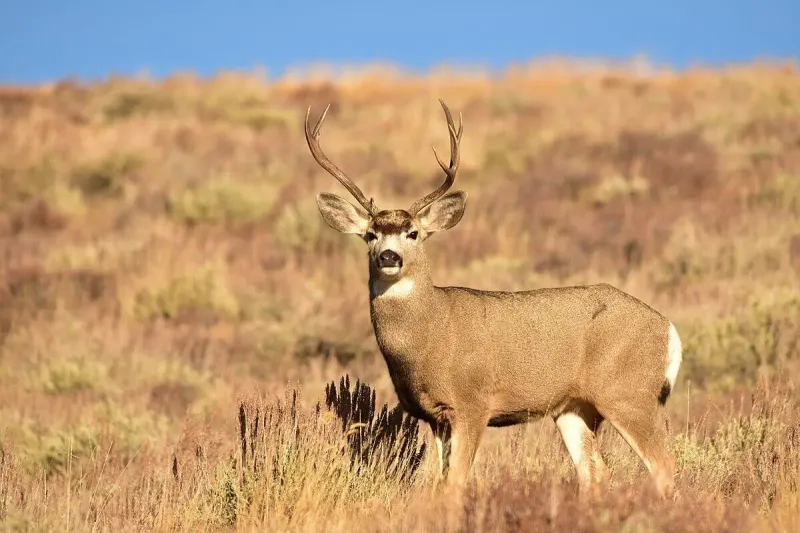
Mule deer are common inhabitants of Yellowstone, often seen grazing in the park’s meadows and forests. These deer are easily recognized by their large ears and distinctive bounding gait.
Observing a doe with her fawn is a heartwarming experience, highlighting the beauty of wildlife in its natural setting. Mule deer play a vital role in shaping plant communities and serve as prey for predators.
Their presence enriches the park’s ecosystem, offering visitors a glimpse into the intricate web of life. Always observe wildlife from a safe distance to ensure their protection.
Canada Lynx
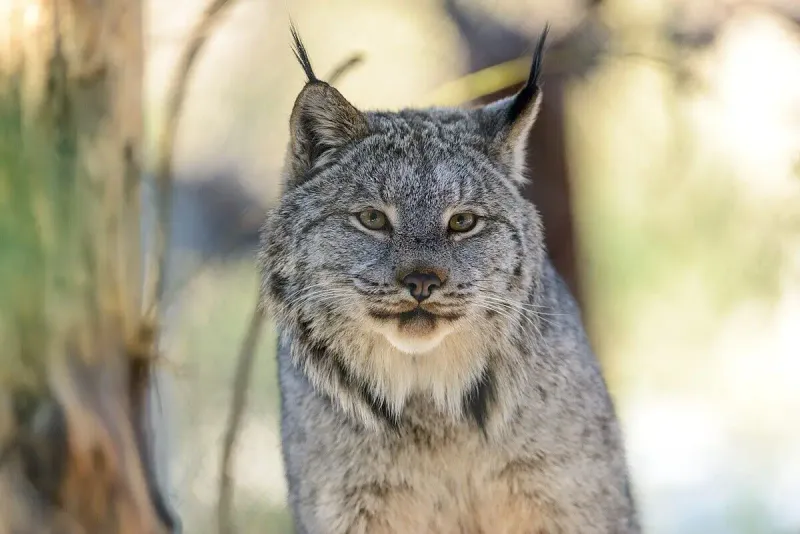
The elusive Canada lynx is a rare sight in Yellowstone, known for its solitary and secretive nature. These felines are distinguished by their tufted ears and thick, silvery fur, which provides camouflage in snowy environments.
Spotting a lynx requires patience and a keen eye, as they often blend seamlessly into the forest backdrop. Canada lynx play a critical role in controlling snowshoe hare populations, maintaining ecological balance.
Observing a lynx in the wild offers a rare and thrilling adventure, showcasing the park’s commitment to preserving diverse and elusive wildlife.
Yellowstone Toad
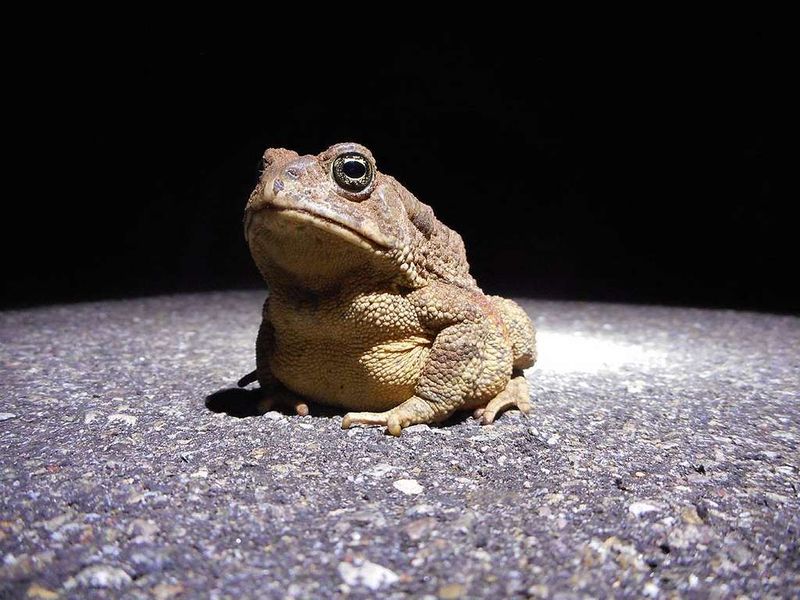
The Yellowstone Toad may be small, but it plays a crucial role in the park’s ecosystem. Its mottled green and brown skin serves as excellent camouflage amidst the park’s lush vegetation.
Look closely by streams and ponds, and you might spot these toads basking in the sun or foraging for insects.
Despite their unassuming appearance, Yellowstone Toads are vital indicators of environmental health. Their presence signifies a thriving aquatic ecosystem.
Conservation efforts are underway to protect these amphibians from habitat loss and disease, making each sighting a treasured encounter.
Great Gray Owl
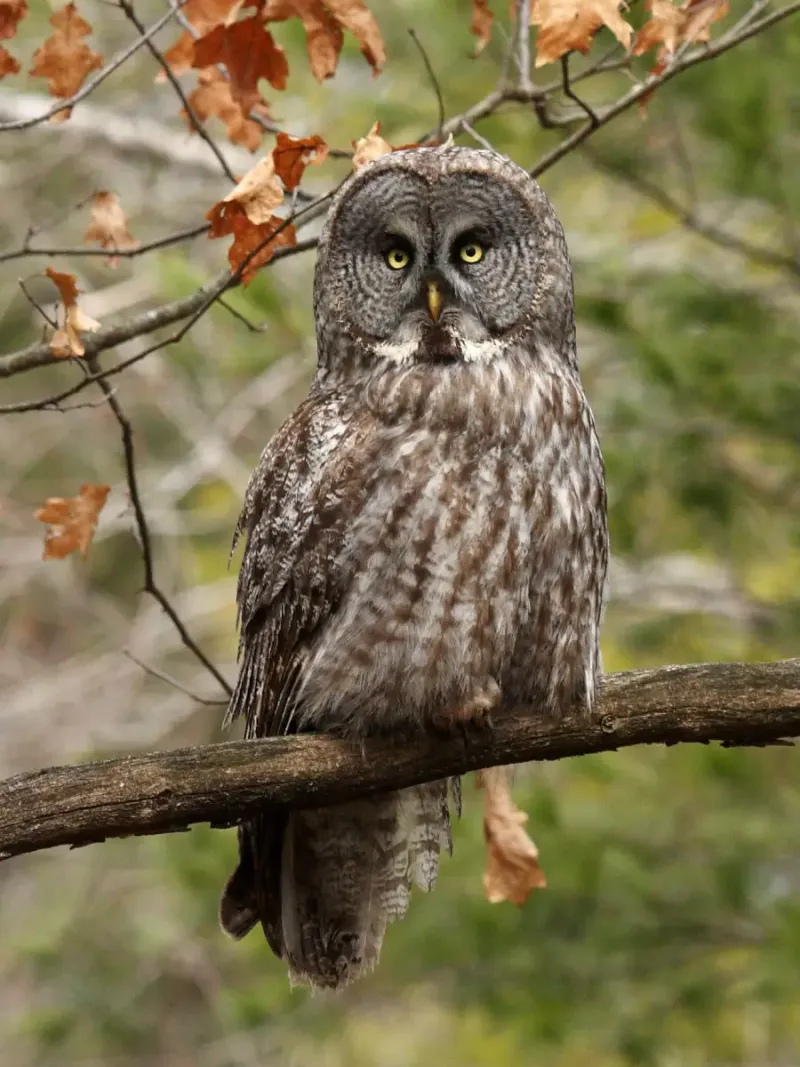
The great gray owl is a majestic presence in Yellowstone, often seen perched silently in the park’s dense forests. These large owls are distinguished by their striking facial discs and piercing yellow eyes.
Watching a great gray owl swoop down to catch prey is an awe-inspiring spectacle. Owls play a crucial role in controlling rodent populations, maintaining ecological balance.
Observing them in their natural habitat offers insight into their nocturnal hunting strategies and adaptations. Their presence highlights Yellowstone’s commitment to preserving avian diversity and offers visitors a chance to connect with nature’s mysteries.
Mountain Bluebird
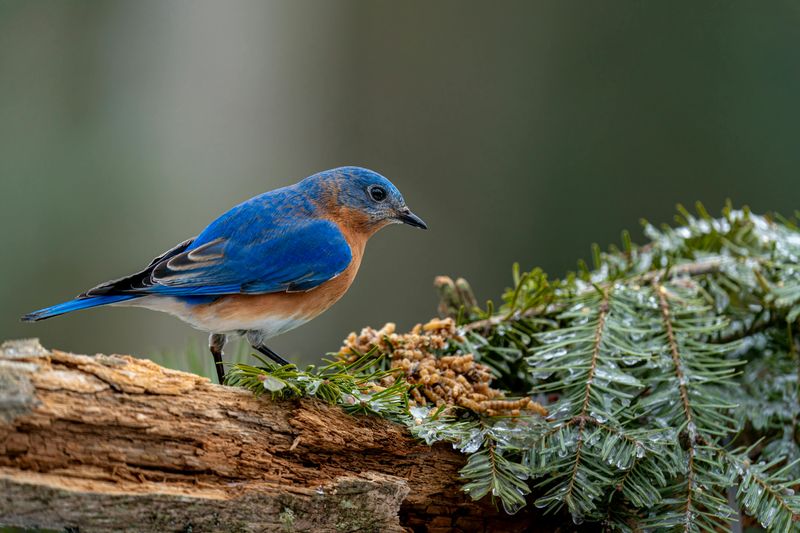
The mountain bluebird is a vibrant and lively resident of Yellowstone’s open meadows and grasslands. These small birds are easily recognized by their brilliant blue plumage and cheerful song.
Watching a bluebird flit between fence posts and wildflowers is a delightful sight, showcasing the park’s avian diversity. Bluebirds play a role in controlling insect populations, contributing to ecological health.
Their presence enriches the park’s landscapes, offering visitors a colorful and musical connection to nature. Observing a mountain bluebird is a simple yet profound reminder of the beauty found in Yellowstone’s wilderness.
Clark’s Nutcracker
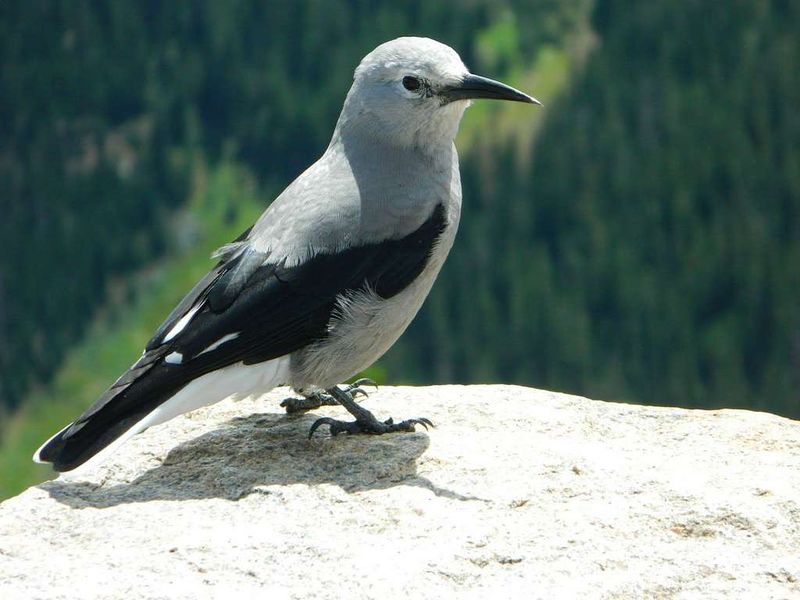
Clark’s Nutcracker is a fascinating bird known for its intelligence and role in Yellowstone’s ecosystem. With a pale gray body and black wings, these birds are often seen perched on whitebark pines, where they use their sharp beaks to extract seeds.
Their relationship with the whitebark pine is symbiotic, as they play a crucial role in seed dispersal, aiding in the tree’s reproduction. This makes them vital to the health and regeneration of Yellowstone’s forests.
Observing a Clark’s Nutcracker at work is an educational experience, showcasing the intricate connections within the park’s natural environment.
Uinta Ground Squirrel
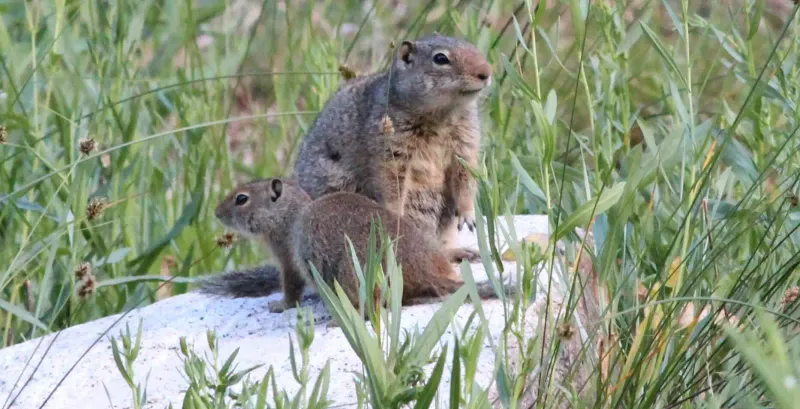
Uinta Ground Squirrels are charming creatures that inhabit Yellowstone’s expansive meadows. Known for their curious nature, these small rodents are often seen peeking out of their burrows, surrounded by colorful wildflowers.
During warmer months, they are active foragers, collecting seeds and plants to sustain themselves. Their social behavior and vocalizations add a lively touch to Yellowstone’s meadows.
Visitors to the park can enjoy watching Uinta Ground Squirrels as they playfully interact with each other, providing a delightful glimpse into the social dynamics of these resilient creatures.
Pika
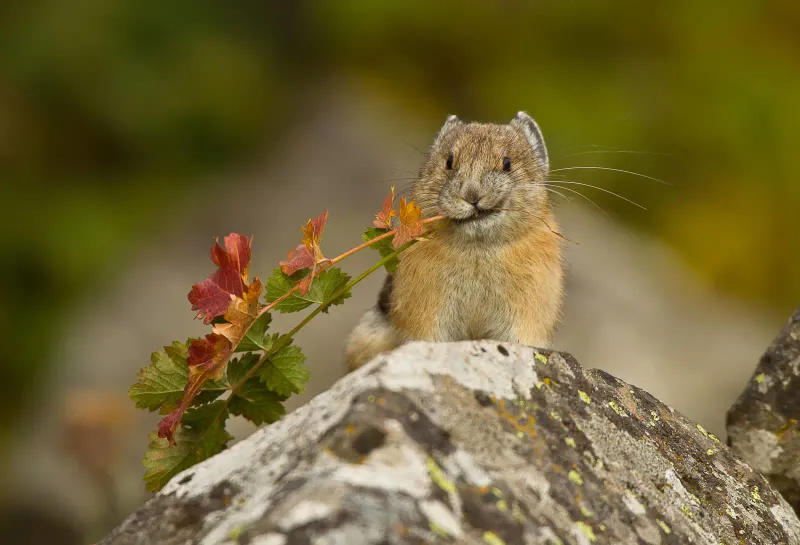
The Pika is a small, round-eared mammal that thrives in Yellowstone’s rocky slopes. Known for their high-pitched calls, Pikas are often seen with mouthfuls of grass, scurrying to store food for the long winter months.
These resilient creatures are well-adapted to the park’s harsh conditions, making their homes among the rocks where they find shelter from predators. Their industrious nature and constant foraging make them a charming sight.
Visitors to Yellowstone can spot Pikas by listening for their distinctive calls and observing their diligent preparations for survival in a challenging environment.
Harlequin Duck
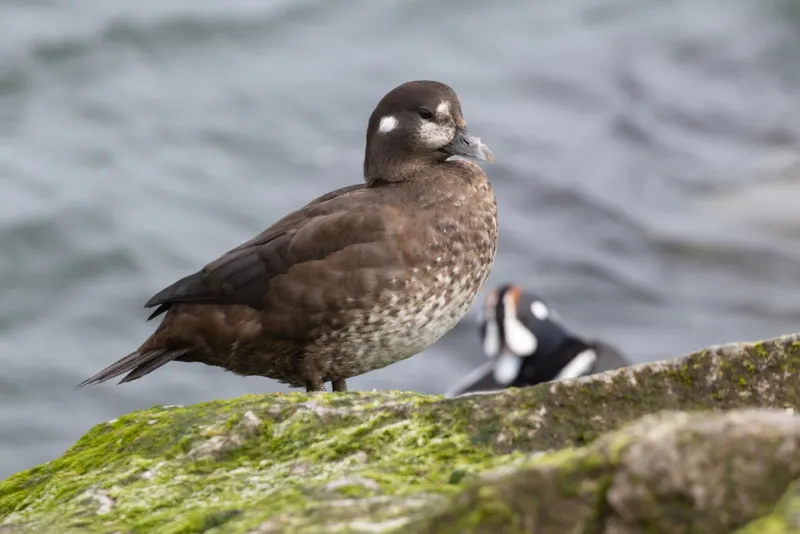
The Harlequin Duck is a distinctive and colorful bird found in the turbulent rivers of Yellowstone. Males boast vibrant plumage with striking patterns, making them a photographer’s delight.
Their preference for fast-flowing waters sets them apart from many other duck species.
These ducks are adept at navigating the park’s challenging river currents, often seen bobbing and diving in search of aquatic insects. Their unique choice of habitat and vivid appearance make them a fascinating subject for bird watchers and nature enthusiasts alike.
Spotting a Harlequin Duck requires patience and a keen eye, but the reward is witnessing one of nature’s most beautifully adorned waterfowl in action.
Pine Marten
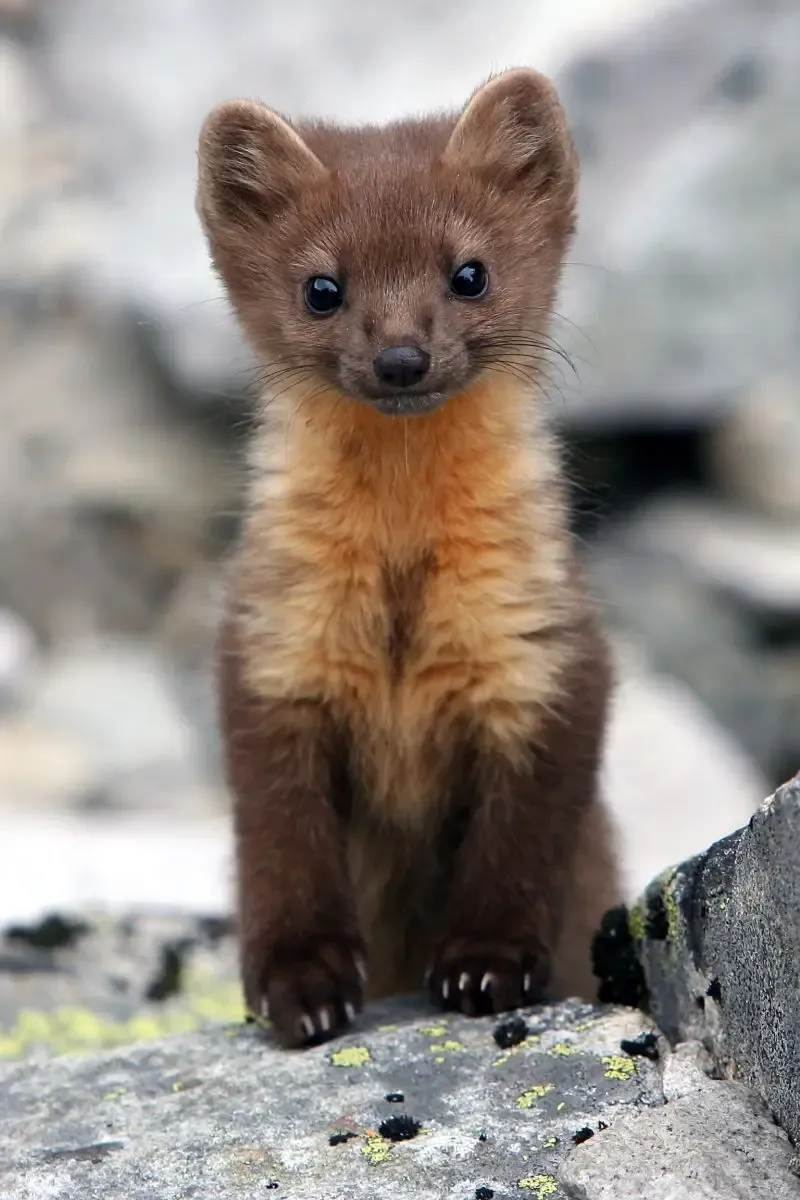
The Pine Marten is one of Yellowstone’s elusive residents, known for its agility and playful nature. These small mammals are adept climbers, often spotted darting through the park’s dense coniferous forests.
With a sleek, furry body and sharp eyes, they are both adorable and formidable hunters.
In winter, Pine Martens skillfully navigate the snowy landscape, using their lightweight bodies to stay atop the snow. They are opportunistic feeders, enjoying a varied diet that includes small mammals and birds.
Watching a Pine Marten hunt is truly a spectacle of nature.
For wildlife photographers, capturing a Pine Marten is a rewarding challenge. Their quick movements and preference for high tree branches make them a rare but cherished sight in Yellowstone.

